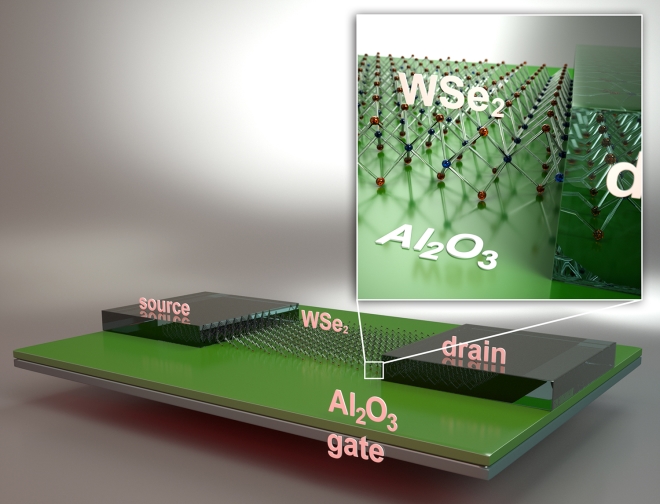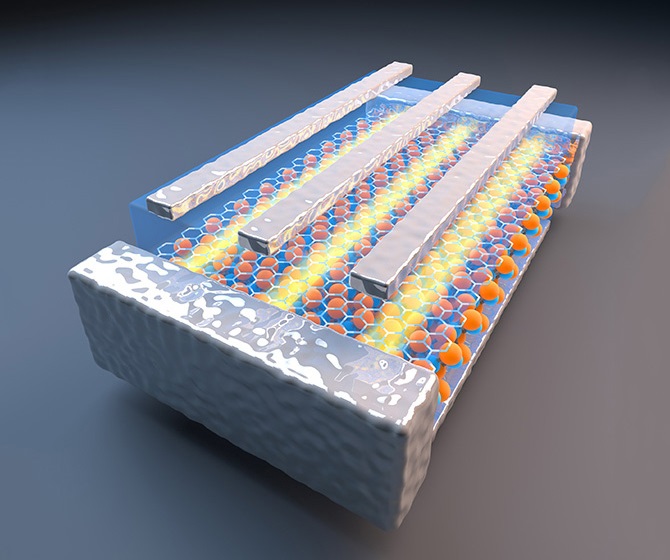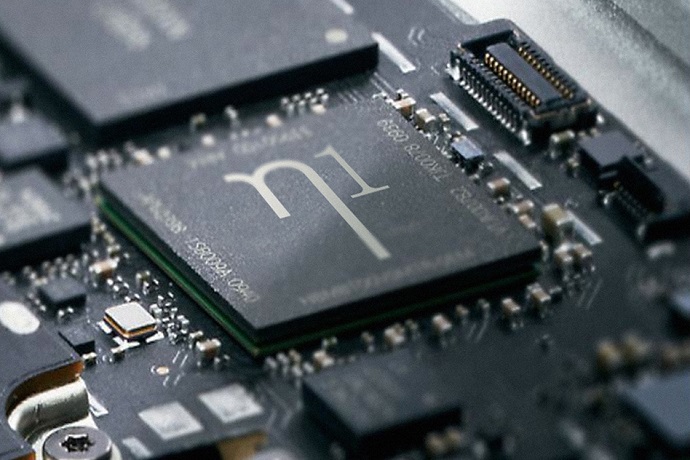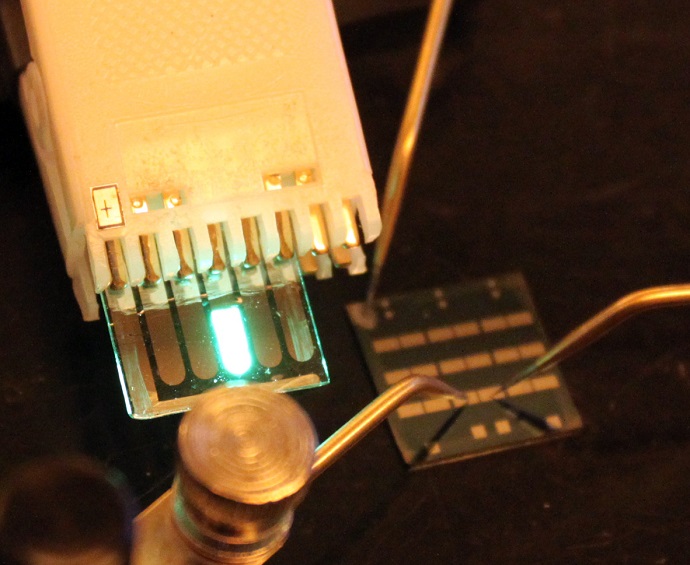June 20, 2013
(Santa Barbara, Calif.) - Researchers at UC Santa Barbara, in collaboration with University of Notre Dame, have recently demonstrated the highest reported drive current on a transistor made of a monolayer of tungsten diselenide (WSe2), a 2-dimensional atomic crystal categorized as a transition metal dichalcogenide (TMD). The discovery is also the first demonstration of an "n-type" WSe2 field-effect-transistor (FET), showing the tremendous potential of this material for future low-power and high-performance integrated circuits.
Monolayer WSe2 is similar to graphene in that it has a hexagonal atomic structure and derives from its layered bulk form in which adjacent layers are held together by relatively weak Van der Waals forces. However, WSe2 has a key advantage over graphene.
“In addition to its atomically smooth surfaces, it has a considerable band gap of 1.6 eV,” explained Kaustav Banerjee, professor of electrical and computer engineering and Director of the Nanoelectronics Research Lab at UCSB. Banerjee’s research team also includes UCSB researchers Wei Liu, Jiahao Kang, Deblina Sarkar, Yasin Khatami and Professor Debdeep Jena of Notre Dame. Their study was published in the May 2013 issue of Nano Letters.
“There is growing worldwide interest in these 2D crystals due to the many possibilities they hold for the next generation of integrated electronics, optoelectronics and sensors,” commented Professor Pulickel Ajayan, the Anderson Professor of Engineering at Rice University and a world renowned authority on nanomaterials. “This result is very impressive and an outcome of the detailed understanding of the physical nature of the contacts to these 2D crystals that the Santa Barbara group has developed.”
“Understanding the nature of the metal-TMD interfaces was key to our successful transistor design and demonstration,” explained Banerjee. Banerjee’s group pioneered a methodology using ab-initio Density Functional Theory (DFT) that established the key criteria needed to evaluate such interfaces leading to the best possible contacts to the monolayer TMDs.
The DFT technique was pioneered by UCSB professor emeritus of physics Dr. Walter Kohn, for which he was awarded the Nobel Prize in Chemistry in 1998. “At a recent meeting with Professor Kohn, we discussed how this relatively new class of semiconductors is benefitting from one of his landmark contributions,” said Banerjee.
Wei Liu, a post-doctoral researcher in Banerjee’s group and co-author of the study, explained, "Guided by the contact evaluation methodology we have developed, our transistors achieved ON currents as high as 210 uA/um, which are the highest reported value of drive current on any monolayer TMD based FET to date.” They were also able to achieve mobility of 142 cm2/V.s, which is the highest reported value for any back-gated monolayer TMD FET.
“DFT simulations provide critical insights to the various factors that effectively determine the quality of the interfaces to these 2D materials, which is necessary for achieving low contact resistances.” added Jiahao Kang, a PhD student in Banerjee’s group and co-author of the study.
“Nanoelectronics and energy efficient computing technology are key areas of research at UCSB, fields in which our faculty members are renowned for their achievements. With these results, Professor Banerjee’s team continues to make important research contributions to next-generation electronics,” commented Rod Alferness, Dean of the College of Engineering at UCSB.
Their research was supported by the National Science Foundation, the California NanoSystems Institute at UC Santa Barbara, and the Materials Research Laboratory at UCSB: an NSF MRSEC.
The College of Engineering at University of California, Santa Barbara is recognized globally as a leader among the top tier of engineering education and research programs, and is renowned for a successful interdisciplinary approach to engineering research.
Related Links
Study published in Nano Letters, May 2013
UCSB Nanoelectronics Research Lab















